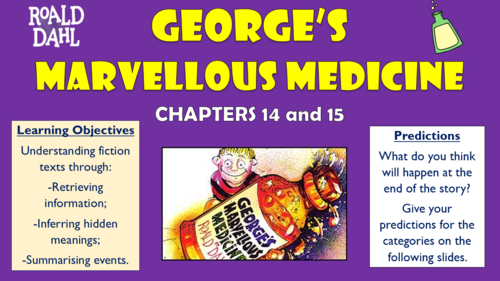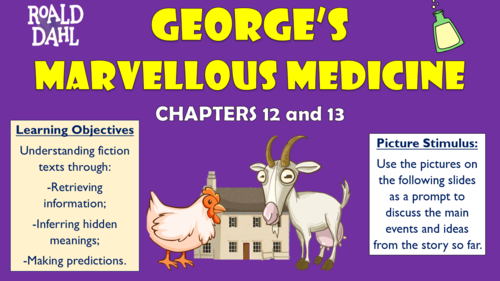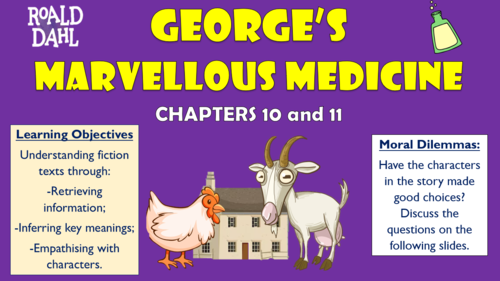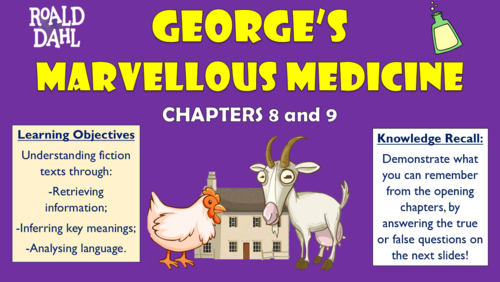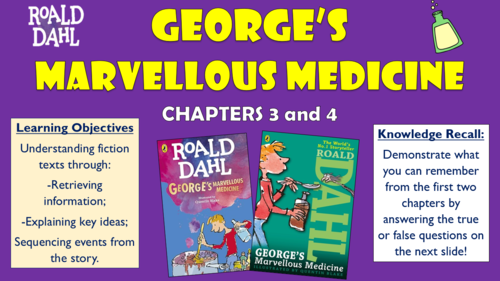
3k+Uploads
2086k+Views
2368k+Downloads
Whole school

Whole Class Reading Session - Sonnet 18 - Shall I Compare thee to a Summer's Day?
This whole class reading session aims to develop children’s fluency and comprehension skills through reading William Shakespeare’s Sonnet 18: ‘Shall I Compare thee to a Summer’s Day?’
The reading is followed by a series of activities aiming to develop comprehension skills through VIPERS activities: vocabulary, inference, prediction, explanation, retrieval, and summarising. It also contains a vocabulary check and key context information to clarify any unfamiliar language and subject matter.
The tasks are comprised of quick-check questions, solo thinking, pair/ group discussions and deeper thinking activities. The extract needed is provided in both Word and PDF, and I’ve also a link to a web-based version of the poem on the first slide.
The session is tried and tested, and was initially delivered to a strong year 6 class, although with only minor adaptations I believe the questions and content would be suitable for those in years 5-8.

Rooftoppers - Katherine Rundell - Chapters 1-3!
This engaging and thought-provoking triple-lesson resource aids students in developing a secure understanding of the chapters 1 to 3 of Katherine Rundell’s 'Rooftoppers.’
The comprehensive and colourful PowerPoint presentation enables students to understand the text through:
-Making predictions;
-Retrieving information;
-Inferring and deducing hidden meanings.
The sessions include a range of retrieval, vocabulary, inference, explanation and deeper thinking activities. A clear, colourful and comprehensive PowerPoint presentation guides students through the learning. The lesson also includes an answer key for the retrieval questions, and model answer ideas for the more detailed responses.
There’s a lot here (22 slides in total) so I would recommend breaking into two or even three separate lessons. The lessons are suitable for students in either upper KS2 or lower KS3, depending upon the individual context of the school and students. I originally used them with year 5 and 6 children.
Bundle Sale

George's Marvellous Medicine - Lesson Bundle!
This engaging and thought-provoking series of lessons has been devised to provide students with a well-rounded, secure understanding of Roald Dahl’s ‘George’s Marvellous Medicine.’ Double and triple lessons include questions and resources for each chapter.
Chapters 1 and 2 - ‘Grandma’ and ‘The Marvellous Plan’
Chapters 3 and 4 - ‘George Begins to Make the Medicine’ and ‘Animal Pills’
Chapters 5, 6 and 7 - ‘The Cook-up’, ‘Brown Paint’ and Grandma Gets the Medicine
Chapters 8 and 9 - ‘The Brown Hen’ and ‘The Pig, The Bullocks, the Sheep, the Pony and the Nanny-goat.’
Chapters 10 and 11 - ‘A Crane for Grandma’ and ‘Mr Kranky’s Great Idea.’
Chapters 12 and 13 - ‘Marvellous Medicine Number Two’ and ‘Marvellous Medicine Number Three.’
Chapters 14 and 15 - ‘Marvellous Medicine Number Four’ and ‘Goodbye Grandma.’
The comprehensive and colourful PowerPoint presentations guide students through a wide range of activities, including those designed to enhance the following skills: retrieval, understanding vocabulary, inference, explanation, summarising, sequencing, analysis and deeper thinking activities. Additional worksheets and templates are also provided where needed for the creative tasks.
All of the resources and tried and tested in real classrooms, catalysing excellent outcomes. The resources are suitable for students in upper KS1 and lower KS2 (I originally used them with year 2 and year 3 classes).

George's Marvellous Medicine - Chapters 14 and 15 - Double Lesson!
This engaging and thought-provoking double-lesson resource aids students in developing a secure understanding of chapters 14 and 15 of Roald Dahl’s ‘George’s Marvellous Medicine.’ The chapters covered in these lessons are ‘Marvellous Medicine Number Four’ and ‘Goodbye Grandma.’
The lessons are guided by a comprehensive and colourful PowerPoint presentation, and enables students to understand the text through:
-Retrieving information;
-Inferring hidden meanings;
-Summarising events.
The sessions include a range of retrieval, vocabulary, inference, explanation and deeper thinking activities. A clear, colourful and comprehensive PowerPoint presentation guides students through the learning. A storyboard template is also provided for the creative activity (in both Word and PDF).
There’s a lot in the session (18 slides in total) so I would recommend breaking into two lessons. The lessons are most suitable for children in upper key stage 1 or lower key stage 2, (they have been used in the past with children in years 2 and 3) but they could also be adapted for slightly older and younger year groups.

George's Marvellous Medicine - Chapters 12 and 13 - Double Lesson!
This engaging and thought-provoking double-lesson resource aids students in developing a secure understanding of chapters 12 and 13 of Roald Dahl’s ‘George’s Marvellous Medicine.’ The chapters covered in these lessons are ‘Marvellous Medicine Number Two’ and ‘Marvellous Medicine Number 3.’
The lessons are guided by a comprehensive and colourful PowerPoint presentation, and enables students to understand the text through:
-Retrieving information;
-Inferring hidden meanings;
-Making predictions.
The sessions include a range of retrieval, vocabulary, inference, explanation and deeper thinking activities. A clear, colourful and comprehensive PowerPoint presentation guides students through the learning.
There’s a lot in the session (17 slides in total) so I would recommend breaking into two lessons. The lessons are most suitable for children in upper key stage 1 or lower key stage 2, (they have been used in the past with children in years 2 and 3) but they could also be adapted for slightly older and younger year groups.

George's Marvellous Medicine - Chapters 10 and 11 - Double Lesson!
This engaging and thought-provoking double-lesson resource aids students in developing a secure understanding of chapters 10 and 11 of Roald Dahl’s ‘George’s Marvellous Medicine.’ The chapters covered in these lessons are ‘A Crane for Grandma’ and 'Mr Kranky’s Great Idea.’
The lessons are guided by a comprehensive and colourful PowerPoint presentation, and enables students to understand the text through:
-Retrieving information;
-Inferring hidden meanings;
-Empathising with characters.
The sessions include a range of retrieval, vocabulary, inference, explanation and deeper thinking activities. A clear, colourful and comprehensive PowerPoint presentation guides students through the learning.
There’s a lot in the session (19 slides in total) so I would recommend breaking into two lessons. The lessons are most suitable for children in upper key stage 1 or lower key stage 2, (they have been used in the past with children in years 2 and 3) but they could also be adapted for slightly older and younger year groups.

George's Marvellous Medicine - Chapters 8 and 9 - Double Lesson!
This engaging and thought-provoking double-lesson resource aids students in developing a secure understanding of chapters 8 and 9 of Roald Dahl’s ‘George’s Marvellous Medicine.’ The chapters covered in these lessons are ‘The Brown Hen’ and ‘'The Pig, the Bullocks, the Sheep, the Pony and the Nanny-goat.’
The lessons are guided by a comprehensive and colourful PowerPoint presentation, and enables students to understand the text through:
-Retrieving information;
-Inferring hidden meanings;
-Analysing language.
The sessions include a range of retrieval, vocabulary, inference, explanation and deeper thinking activities. A clear, colourful and comprehensive PowerPoint presentation guides students through the learning.
There’s a lot in the session (19 slides in total) so I would recommend breaking into two lessons. The lessons are most suitable for children in upper key stage 1 or lower key stage 2, (they have been used in the past with children in years 2 and 3) but they could also be adapted for slightly older and younger year groups.

George's Marvellous Medicine - Chapters 5, 6 and 7 - Triple Lesson!
This engaging and thought-provoking set of resources aid students in developing a secure understanding of chapters 5 to 7 of Roald Dahl’s ‘George’s Marvellous Medicine.’ The chapters covered in these lessons are ‘The Cook-up’, ‘Brown Paint’ and ‘Grandma Gets the Medicine.’
The lessons are guided by a comprehensive and colourful PowerPoint presentation, and enables students to understand the text through:
-Retrieving information;
-Inferring hidden meanings;
-Summarising information.
The sessions include a range of retrieval, vocabulary, inference, explanation and deeper thinking activities. A clear, colourful and comprehensive PowerPoint presentation guides students through the learning. A useful template is also provided for the creative storyboarding activity (in both Word and PDF).
There’s a lot in the session (20 slides in total) so I would recommend breaking into two or even three lessons. The lessons are most suitable for children in upper key stage 1 or lower key stage 2, (they have been used in the past with children in years 2 and 3) but they could also be adapted for slightly older and younger year groups.

George's Marvellous Medicine - Chapters 3 and 4 - Double Lesson!
This engaging and thought-provoking double-lesson resource aids students in developing a secure understanding of the chapters 3 to 4 of Roald Dahl’s ‘George’s Marvellous Medicine.’ The chapters covered in these lessons are ‘George Begins to Make the Medicine’ and ‘Animal Pills.’
The lessons are guided by a comprehensive and colourful PowerPoint presentation, and enables students to understand the text through:
-Retrieving information;
-Explaining key meanings;
-Sequencing events.
The sessions include a range of retrieval, vocabulary, inference, explanation and deeper thinking activities. A clear, colourful and comprehensive PowerPoint presentation guides students through the learning.
There’s a lot in the session (18 slides in total) so I would recommend breaking into two lessons. The lessons are most suitable for children in upper key stage 1 or lower key stage 2, (they have been used in the past with children in years 2 and 3) but they could also be adapted for slightly older and younger year groups.

George's Marvellous Medicine - Chapters 1 and 2 - Double Lesson!
This engaging and thought-provoking double-lesson resource aids students in developing a secure understanding of the chapters 1 to 2 of Roald Dahl’s 'George’s Marvellous Medicine.’ The chapters covered in these lessons are ‘Grandma’ and ‘The Marvellous Plan.’
The lessons are guided by a comprehensive and colourful PowerPoint presentation, and enables students to understand the text through:
-Making predictions;
-Retrieving information;
-Inferring and deducing hidden meanings.
The sessions include a range of retrieval, vocabulary, inference, explanation and deeper thinking activities. A clear, colourful and comprehensive PowerPoint presentation guides students through the learning. A worksheet/ template is also provided for the creative medicine activity (in both Word and PDF format).
There’s a lot in the session (20 slides in total) so I would recommend breaking into two lessons. The lessons are most suitable for children in upper key stage 1 or lower key stage 2, (they have been used in the past with children in years 2 and 3) but they could also be adapted for slightly older and younger year groups.
Bundle Sale

Matilda Big Bundle!
This ‘Matilda’ big bundle contains all of the Matilda lessons, plus the detailed knowledge organiser and the 20-page comprehension activities booklet!
The entire novel is broken down in to 10 double (and in some cases triple) lesson bundles, meaning that there is a total of 21 individual lesson activity sets here - one for each chapter of the text.
Chapters 1 and 2 - ‘The Reader of Books’ and ‘Mr Wormwood, the Great Car Dealer’
Chapters 3 and 4 - ‘The Hat and the Superglue’ and ‘The Ghost’
Chapters 5 and 6 - ‘Arithmetic’ and ‘The Platinum Blond Man’
Chapters 7 and 8 - ‘Miss Honey’ and ‘The Trunchbull’
Chapters 9 and 10 - ‘The Parents’ and ‘Throwing the Hammer’
Chapters 11, 12, and 13 - ‘Bruce Bogtrotter and the Cake’, ‘Lavender’ and ‘The Weekly Test’
Chapters 14 and 15 - ‘The First Miracle’ and ‘The Second Miracle’
Chapters 16 and 17 - ‘Miss Honey’s Cottage’ and ‘Miss Honey’s Story’
Chapters 18 and 19 - ‘The Names’ and ‘The Practice’
Chapters 20 and 21 - ‘The Third Miracle’ and ‘A New Home’
The comprehensive and colourful PowerPoint presentations guide students through a wide range of activities, including those designed to enhance the following skills: retrieval, understanding vocabulary, inference, explanation, summarising, sequencing, analysis and deeper thinking activities. Additional worksheets and templates are also provided where needed for the creative tasks.
All of the resources and tried and tested in real classrooms, catalysing excellent outcomes. The resources are suitable for students across KS2 (I originally used them with year 4 and 5 classes).

Matilda - Knowledge Organiser!
This detailed and visually-appealing resource offers a complete reference point for students learning or revising Roald Dahl’s ‘Matilda.’ It contains comprehensive sections on:
Context;
Chapter by Chapter Summary;
Main Characters;
Themes;
Dahl’s Language Devices;
Important Vocabulary.
Key words and ideas are underlined for easy reference. The resource is designed to be printed onto A4 or A3, and is provided as both a PDF and a Word version (so that you can edit if you want to). All images used are licensed for commercial use and are cited on a separate document (included).

Shabbat - Knowledge Organiser/ Revision Mat!
This detailed and visually-appealing resource offers a complete reference point for children, teachers and other stakeholders when covering the topic of ‘Shabbat’ in religious education. It contains comprehensive sections under the following headings:
-Shabbat Overview;
-Why Shabbat is Important to Jews;
-Shabbat Traditions;
-Forbidden Activities during Shabbat;
-Key Vocabulary.
Key words and ideas are underlined for easy reference. It was originally created for those teaching and learning in KS1/ lower KS2. The resource is designed to be printed onto A3 or A4, and is provided as both a PDF and a Word version (so that you can edit if you want to).

Martin Luther King Jr. Assembly!
This fun and original assembly is designed to teach children all about Martin Luther King Jr., including covering:
-Who Martin Luther King Jr. was;
-The world he was raised in and what he stood for;
-His actions as a civil rights activist;
-What he achieved;
-Why we still celebrate Martin Luther King Jr Day today.
The slides are visually-engaging and well-presented, and the subject matter is tailored to the interests and needs of young people. It includes links to well-chosen videos to emphasise/ reinforce key points, in addition to song suggestions and interactive activities to involve the audience.
There is enough here for a 25-30 minute assembly (it is 17 slides long), but of course you can cut bits out/ tailor to your own individual needs. No further resources are required, everything that you need to present the assembly is included. I would say that the assembly is ideally pitched at KS2, but both KS3 and KS1 would be able to access it with only minor vocabulary/ language adaptations.
Hope that you find this useful!
Bundle Sale

Matilda - Lesson Bundle!
This engaging and thought-provoking series of lessons has been devised to provide students with a well-rounded, secure understanding of Roald Dahl’s ‘Matilda.’ Double and triple lessons are provided for each chapter, broken down into ten resource packs:
Chapters 1 and 2 - ‘The Reader of Books’ and ‘Mr Wormwood, the Great Car Dealer’
Chapters 3 and 4 - ‘The Hat and the Superglue’ and ‘The Ghost’
Chapters 5 and 6 - ‘Arithmetic’ and ‘The Platinum Blond Man’
Chapters 7 and 8 - ‘Miss Honey’ and ‘The Trunchbull’
Chapters 9 and 10 - ‘The Parents’ and ‘Throwing the Hammer’
Chapters 11, 12, and 13 - ‘Bruce Bogtrotter and the Cake’, ‘Lavender’ and ‘The Weekly Test’
Chapters 14 and 15 - ‘The First Miracle’ and ‘The Second Miracle’
Chapters 16 and 17 - ‘Miss Honey’s Cottage’ and ‘Miss Honey’s Story’
Chapters 18 and 19 - ‘The Names’ and ‘The Practice’
Chapters 20 and 21 - ‘The Third Miracle’ and ‘A New Home’
The comprehensive and colourful PowerPoint presentations guide students through a wide range of activities, including those designed to enhance the following skills: retrieval, understanding vocabulary, inference, explanation, summarising, sequencing, analysis and deeper thinking activities. Additional worksheets and templates are also provided where needed for the creative tasks.
All of the resources and tried and tested in real classrooms, catalysing excellent outcomes. The resources are suitable for students across KS2 (I originally used them with year 4 and 5 classes).

Matilda - Chapters 20 and 21 - Double Lesson!
This engaging and thought-provoking double-lesson resource aids students in developing a secure understanding of the final chapters (20 and 21) of Roald Dahl’s 'Matilda.’ The chapters covered in these lessons are entitled ‘The Third Miracle’ and ‘A New Home.’
The lessons are guided by a comprehensive and colourful PowerPoint presentation, and enables students to understand the text through:
-Retrieving information;
-Inferring and deducing hidden meanings;
-Sequencing and summarising key events.
The sessions include a range of retrieval, vocabulary, inference, explanation and deeper thinking activities. A clear, colourful and comprehensive PowerPoint presentation guides students through the learning. A book review template is also included for the main creative task (in both Word and PDF).
There’s a lot in the session (18 slides in total) so I would recommend breaking into two lessons. The lessons are most suitable for children in key stage 2, (they were originally used for those in years 4 and 5).

Matilda - Chapters 18 and 19 - Double Lesson!
This engaging and thought-provoking double-lesson resource aids students in developing a secure understanding of the chapters 18 and 19 of Roald Dahl’s 'Matilda.’ The chapters covered in these lessons are ‘The Names’ and ‘The Practice.’
The lessons are guided by a comprehensive and colourful PowerPoint presentation, and enables students to understand the text through:
-Retrieving information;
-Inferring and deducing hidden meanings;
-Making predictions.
The sessions include a range of retrieval, vocabulary, inference, explanation and deeper thinking activities. A clear, colourful and comprehensive PowerPoint presentation guides students through the learning.
There’s a lot in the session (18 slides in total) so I would recommend breaking into two lessons. The lessons are most suitable for children in key stage 2, (they were originally used for those in years 4 and 5).

Matilda - Chapters 16 and 17 - Double Lesson!
This engaging and thought-provoking double-lesson resource aids students in developing a secure understanding of the chapters 16 and 17 of Roald Dahl’s 'Matilda.’ The chapters covered in these lessons are ‘Miss Honey’s Cottage’ and ‘Miss Honey’s Story.’
The lessons are guided by a comprehensive and colourful PowerPoint presentation, and enables students to understand the text through:
-Retrieving information;
-Inferring and deducing hidden meanings;
-Summarising key events.
The sessions include a range of retrieval, vocabulary, inference, explanation and deeper thinking activities. A clear, colourful and comprehensive PowerPoint presentation guides students through the learning.
There’s a lot in the session (17 slides in total) so I would recommend breaking into two lessons. The lessons are most suitable for children in key stage 2, (they were originally used for those in years 4 and 5).

Being an Upstander - Assembly!
This fun and original assembly aims to inspire children to be ‘upstanders’ who know how to act when they see unsafe or unkind behaviour. The key aims of the session are to:
-Understand why it is important to be an ‘upstander’ and not a ‘bystander;’
-Learn where the word ‘snitch’ comes from and understand why it is never ok to use the word against others in school;
-Know the difference between ‘reporting’ and ‘telling tales.’
This assembly is tried and tested, and has always been really well received in the past. It is comprehensive (24 slides in total - there is enough material for a 30-35 minute assembly or perhaps two 15-20-minute assemblies).
The slides are visually engaging and well-presented, and the subject matter is tailored to the interests and needs of young people. For example, there is an age-appropriate video to help explain the word ‘upstander’, entrance and exit music relating to the key themes, and references to scenarios and dilemmas that they themselves might find themselves in order to help them to make the right choices in their own lives.
No further resources are required - everything that you need to present the assembly is included! It was originally delivered in a primary school, but may be tailored to suit the needs of your own students/ age ranges.
The assembly presentation is fairly self-explanatory, but I’ve included guidance notes to assist the speaker just in case. Hope that you find this useful.

Matilda - Chapters 14 and 15 - Double Lesson!
This engaging and thought-provoking double-lesson resource aids students in developing a secure understanding of the chapters 14 and 15 of Roald Dahl’s 'Matilda.’ The chapters covered in these lessons are ‘The First Miracle’ and ‘The Second Miracle.’
The lessons are guided by a comprehensive and colourful PowerPoint presentation, and enables students to understand the text through:
-Retrieving information;
-Inferring and deducing hidden meanings;
-Analysing the writer’s language.
The sessions include a range of retrieval, vocabulary, inference, explanation and deeper thinking activities. A clear, colourful and comprehensive PowerPoint presentation guides students through the learning.
There’s a lot in the session (18 slides in total) so I would recommend breaking into two lessons. The lessons are most suitable for children in key stage 2, (they were originally used for those in years 4 and 5).




